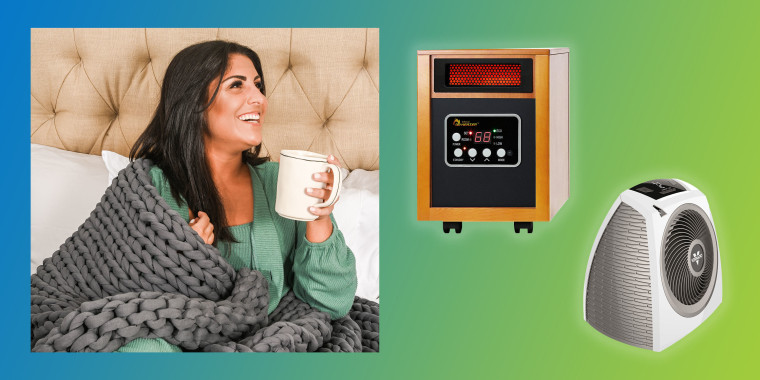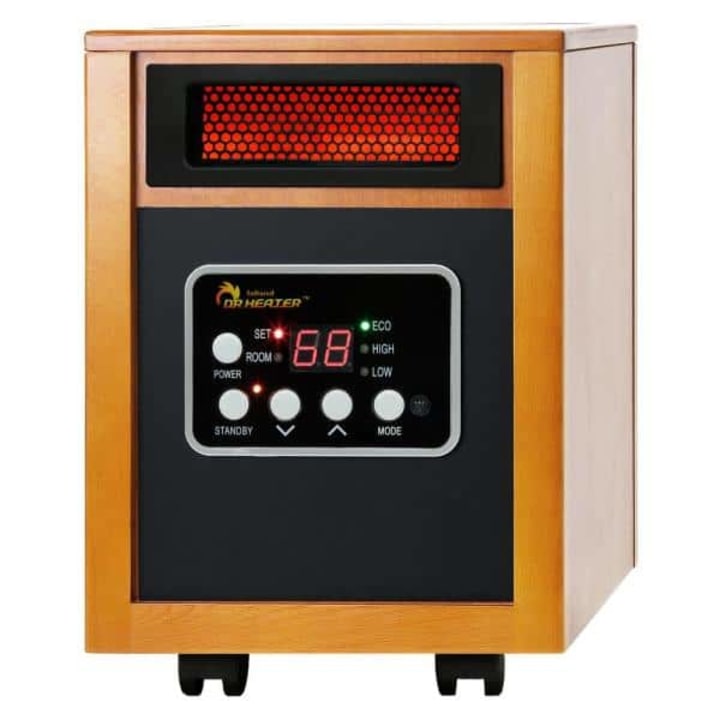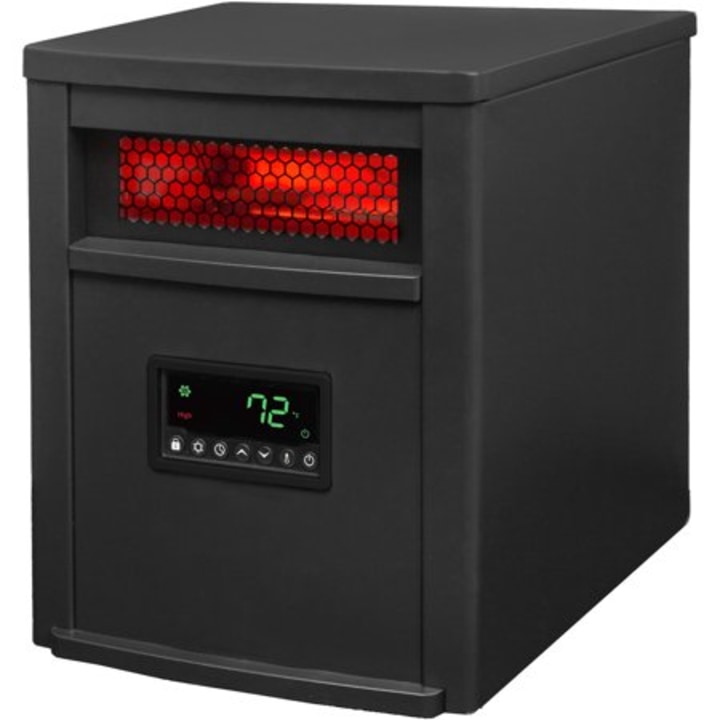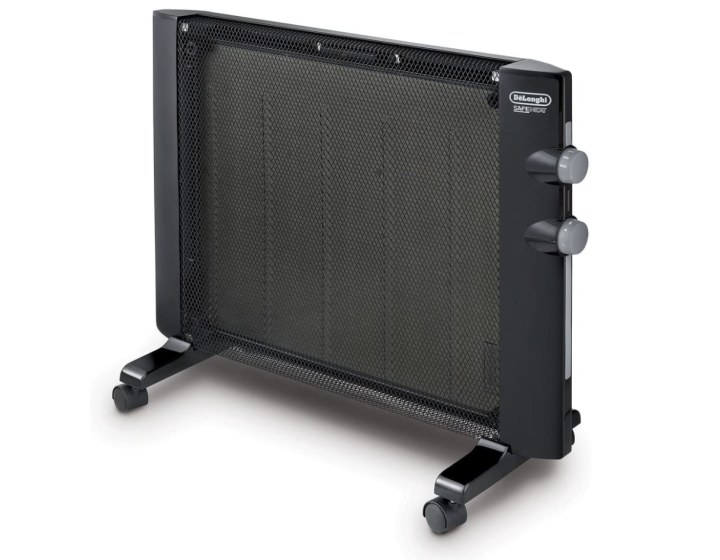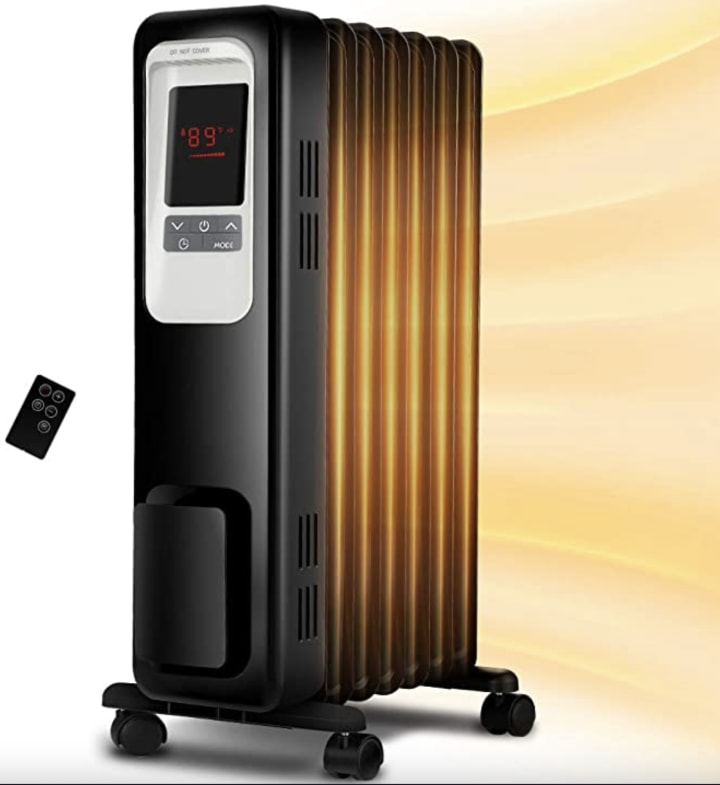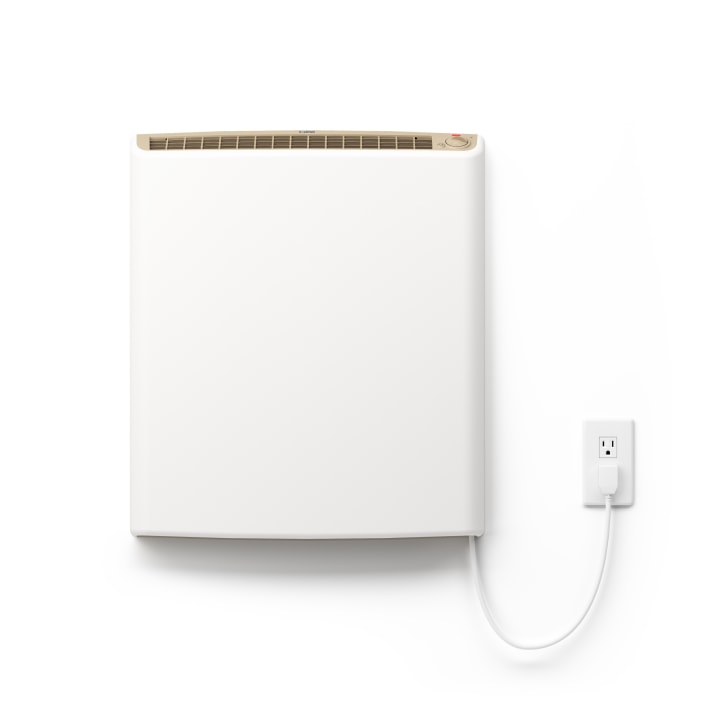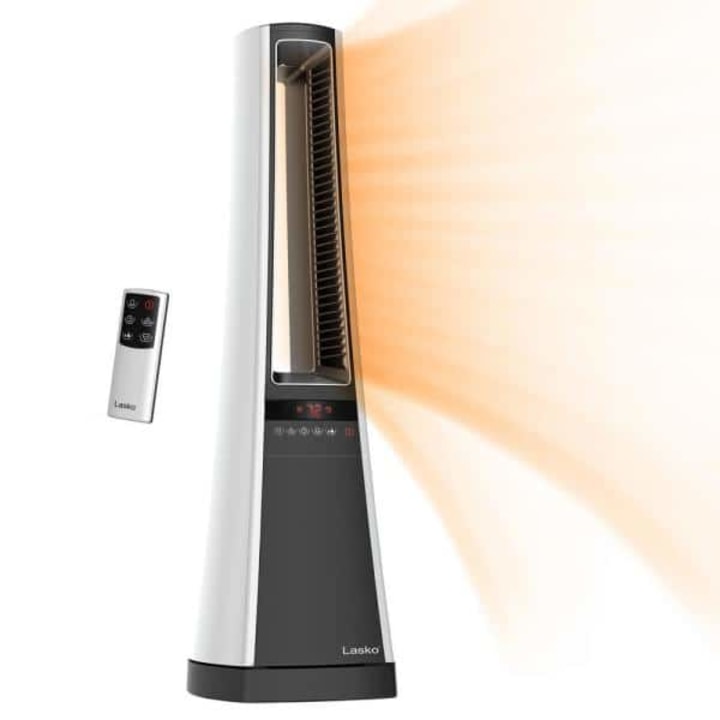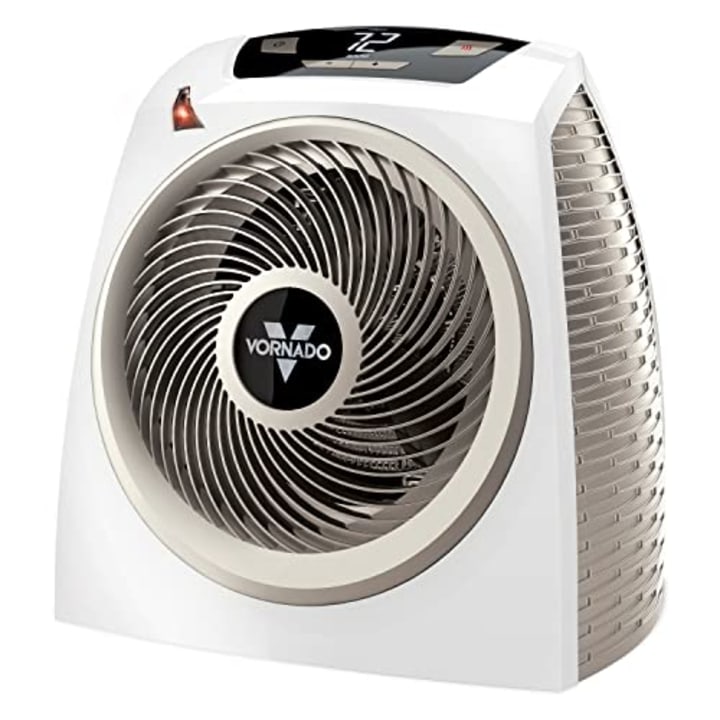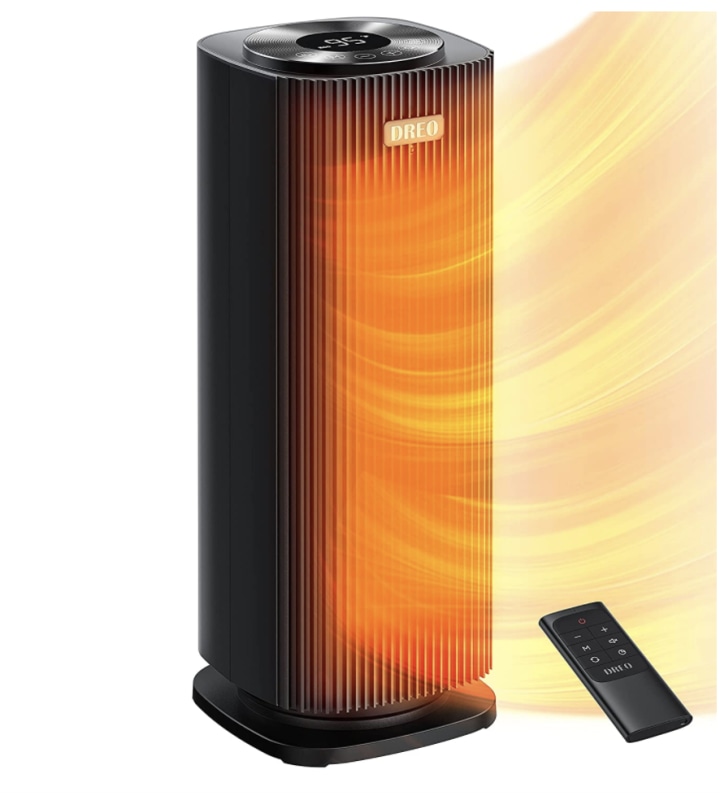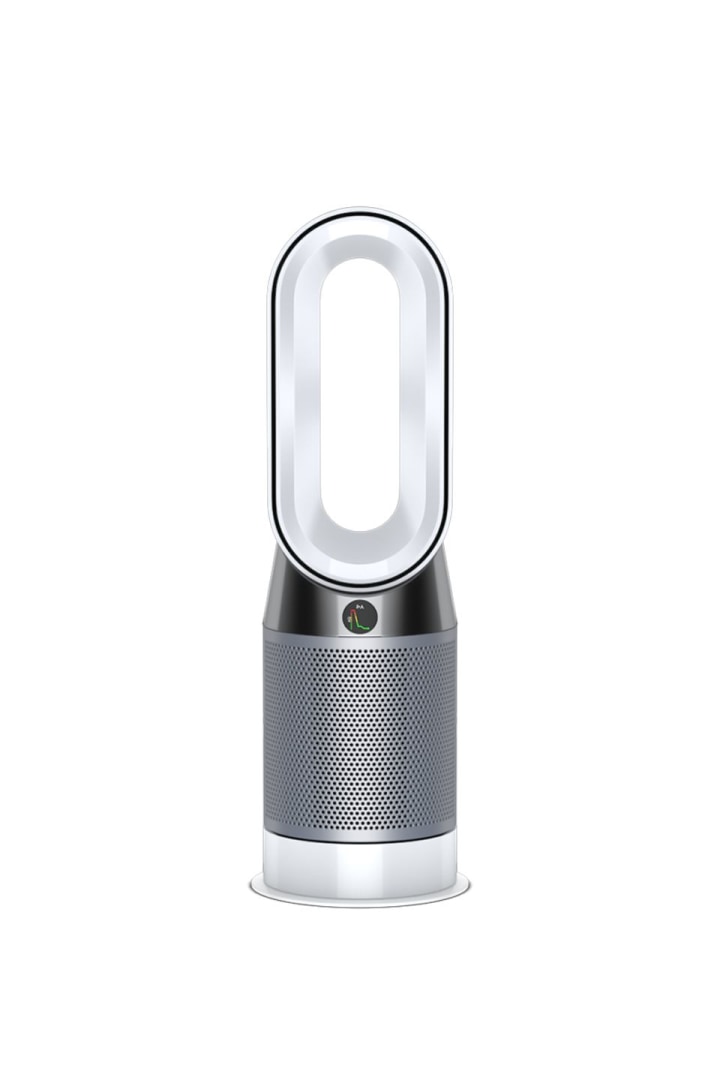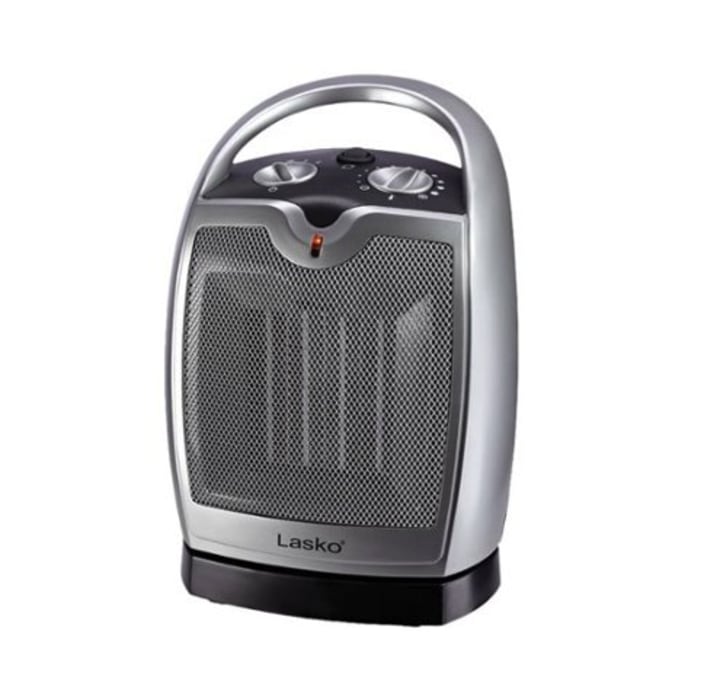Space heaters can be a fast and economical way to warm up your home when temperatures dip — and they can be a beneficial tool to keep on hand in case of emergencies. These portable devices allow you to bring an effective boost of heat wherever you need it — in a drafty bedroom or outside on the patio on a crisp night.
LEARN MORE What is a space heater? | Types of space heaters | Spaces heaters and safety
“Outdoor space heaters are a great way to warm up areas of your yard or patio so that you can still get together with friends and family even as the days get cooler,” said Bailey Carson, home-care expert at Angi.
To determine the best space heater for you, we spoke to home and safety experts about the benefits of space heaters, what features to look for when shopping for one and how to use them safely.
How to shop for a space heater
The first step when shopping for a space heater is figuring out the size of the area you plan to warm. Arie Van Tuijl, a licensed home inspector and founder of home-maintenance website Home Inspector Secrets, generally recommended buying a space heater that is in the 500-1000 watts range for smaller rooms (which are typically considered 120 square feet or less), and between 1000 and 1500 watts for larger rooms. As a general rule of thumb, according to indoor air-quality company Sylvane, you need roughly 10 watts of heating power for every square foot of floor area in the room. This means that a 1,500-watt space heater can be the primary heat source for an area measuring up to 150 square feet. Carson also says it’s important to make sure your heater is compatible with your space:. “If you’re shopping for an indoor space heater, stay away from gas and propane models. If you need a heater for your patio, a gas model may be a good option as long as it’s the correct size. Do a lot of research and read the manufacturer’s guidelines.” Some other key features to look out for while shopping include:
- Noise level. Some units are louder than others. If you’re shopping for a bedroom or home office, that’s something to keep in mind. One resource for finding devices that are especially quiet is Quiet Mark, which tests and awards products based on their noise output.
- Safety features. Space heaters can be potential fire hazards, so don’t overlook any built-in features designed to lessen that chance. “Make sure to buy one that has protective grills as well as auto-shut off capabilities [in case] the heater tips over or overheats,” said Carson. If you’ve had your space heater for a while, she recommended double-checking for an auto-shut off feature since some older models may not have one.
- Warranty. A quality space heater will have a three-year warranty. Don’t forget to look into warranty options. “This way, you can protect your investment in case anything happens,” Wiseman noted.
- Energy efficiency. Space heaters are generally more energy efficient than central heating since you’re only heating up the room and some space heaters are also more energy efficient than others. Since space heaters don’t have Energy Star ratings — which independently certifies a product’s energy efficiency — the easiest way to determine if your unit conserves energy is by checking whether it has features like an adjustable thermostat and auto shut-off option that can maintain a certain temperature and prevent a room from overheating, according to the Department of Energy.
The best space heaters to shop
To help give you an idea of the space heater choices out there, we rounded up expert-recommended options at various price points. Each one carries either the ETL or UL label, which means they were tested by an independent testing agency to ensure they meet the Underwriters Laboratory requirements for safety. Experts also shared their favorite space heaters from brands like Dyson, Vornado, Lasko and more.
Top radiant space heater: Dr. Infrared Heater
Dr. Infrared Heater Portable Space Heater
Glenn Wiseman, sales manager of Top Hat Home Comfort Services in Ontario, recommended this portable infrared model for its dual heating system and built-in thermostat that ranges from 50 to 85 degrees Fahrenheit The energy-saving space heater offers 1,500 watts and is powered through a electric cord with 120 volts, which can evenly heat a 150-square-foot room, he said. It also has an automatic 12-hour shutoff timer.
Top radiant space heater for big rooms: Lifesmart
Lifesmart 6 Element Heater
For spaces ranging up to 150 square feet, Van Tuijl recommended this Lifesmart infrared space heater, which has a maximum setting of 1500 watts. It includes a remote, a 12-hour timer, and three different heat modes. It also includes an ”eco setting,” which the brand says maintains a constant 68-degree temperature using less power for when you want to bring it into a smaller room.
Top panel radiant space heater: De'Longhi
De'Longhi Mica Thermic Panel Heater
The nice thing about this lightweight, compact space heater is that it can either be mounted on the wall or set on the floor. It also comes with wheels so you can easily move it from room to room. It packs a powerful punch with 1500 watts of heat and has an adjustable thermostat and multiple heat settings so you can personalize your comfort, according to the brand.
Top convection space heater: KopBeau
KopBeau 1500W Oil Filled Radiator Space Heater
Van Tuijl said this KopBeau indoor space heater is his overall pick for bedrooms. This oil-fueled convection model has four heating modes: low, medium, high and eco mode, the latter of which the brand says cycles between the highest and lowest settings to maintain your room temperature while reducing energy consumption. The heater also has a 24-hour on/off timer with a remote control for ease of use, according to KopBeau.
Top wall-mounted convection space heater: Envi
Envi 120v Plug-in Electric Panel Wall Heater
Van Tuijl recommended this wall-mounted, convection space heater, which has a temperature controlling thermostat and the brand’s Wall-Sens technology, which cuts out the power for safety when the unit is removed from the wall, according to the brand. The unit, which Envi says heats rooms between 130 and 150 square feet, is just 2 inches thick and can automatically dim the power light in dark rooms.
Top tower convection space heater: Lasko
Lasko Electric Tower Heater
This Lasko space heater has a bladeless design at a more affordable price than similar brands, like Dyson. Lasko says it's equipped with a slew of safety features, including a safe touch surface and an automatic 8-hour shut-off switch. With its quiet oscillating mode, this tower can evenly distribute heat in rooms up to 300 square feet, according to the brand.
Top combination space heater: Vornado
Vornado AVH10 Vortex Heater
The AVH10 Vortex Heater from Vornado, a brand that Wiseman said has good safety standards, has two heat settings and a fan-only option, along with an adjustable thermostat that the brand says lets you precisely control the temperature of your room. It can heat rooms up to 300 square feet and features a hidden cord storage compartment at the bottom of the heater, according to Vornado.
Top energy-efficient combination space heater: Dreo
Dreo Indoor Space Heater
Van Tuijl recommended this convection space heater from Dreo due to its easy-to-use touch screen panel, strong heat output and remote control capabilities. This model has three heating modes and a digital thermostat that ranges from 41 degrees to 95 degrees Fahrenheit. It also has a timer that automatically shuts off after 12 hours, and the remote lets you turn the unit off from up to 26 feet away, according to the brand.
Top high-end combination space heater: Dyson
Dyson Pure Hot + Cool HP04 Fan
The bladeless Dyson Pure Hot + Cold is a remote-controlled heater, fan and air purifier all in one, according to the brand. The remote-controlled fan can oscillate up to 350 degrees and offers different modes, including a backward airflow mode that diverts air through the rear of the space heater, continuing its purifying effect without the draft, according to the brand. It also includes a nighttime mode that uses a dimmed display, according to Dyson. Wiseman noted this space heater is “substantially quieter” than many other models and can regulate indoor air quality: using a HEPA-style filter, this Dyson option can capture 99.97 percent of particles that are 0.3 microns in size, says the brand. The unit can also connect to Wi-Fi so you can control your machine remotely and schedule when your air purifier is on, using the Dyson Link app.
Top ceramic combination space heater: Lasko
Lasko Oscillating Ceramic Heater
The most affordable option on this list, the portable Lasko Oscillating Ceramic Heater can be a worthwhile option if you’re on a budget. Lasko says this space heater can heat rooms up to 300 square feet and offers two heat levels — low heat and high heat — along with a cool air fan setting. You can also use the thermostat knob to both turn on the unit and have it shut off automatically once a certain temperature has been reached (though the knob itself doesn’t list actual numbers), according to the brand.
What is a space heater — and do you need one?
Space heaters are portable devices designed to heat single rooms rather than entire houses, explained Van Tuijl. If you have central heating and some spots in your home get chilly, or you just want a blast of warm air in a given area, space heaters are a great option, he said. Instead of paying to heat up an entire house and keep it warm, space heaters act as a supplement to your main HVAC system to only increase the temperature in a given area. If you’re on a budget, Carson noted an electric space heater will likely “give you the extra warmth you need without breaking the bank.”
But Van Tuijl also noted that a drafty house can reduce the effectiveness of space heaters. “If there are bottom gaps in the exterior doors, a door sweep should be installed, [and] windows frequently have small gaps at the top that can be sealed with weather stripping,” he said. Carson contended that space heaters are predominantly a short-term solution for a specific area. “They aren’t meant to replace a solid heating system — if you find yourself using space heaters to mask uneven heating in your home, bring in a pro to address the root of the problem,” she advised.
Other space heater benefits
In addition to heating up a room, space heaters have several other potential benefits.
Space heaters work fast: A space heater takes less time to distribute heat and warmth within an area compared to an HVAC system, explained Wiseman. “Central heating often takes some time to reach a set temperature,” he said. “It's a convenient way that you can quickly raise the room temperature and add warmth to any space needed.”
Space heaters are consistent: Some space heaters offer a simple high or low heat setting; others allow you to set a specific temperature between 60 and 80 degrees. Regardless, once you find your ideal heat level, space heaters maintain that level in a space for as long as you want.
Types of space heaters
Portable space heaters come in various shapes and sizes can work in nearly any space, said Carson. As a rule of thumb, according to indoor air-quality company Sylvane, you need roughly 10 watts of heating power for every square foot of floor area in the room. This means that a 1,500-watt space heater can be the primary heat source for an area measuring up to 150 square feet. There are a few different types to choose from, and each is designed to heat up your space through a different method. There are three main types of space heaters: radiant, convection and combination.
Radiant space heaters
“Radiant heaters are great for large rooms,” said Carson, because rather than warming up an entire area, they emit infrared radiation to heat what’s directly in front of them (not unlike a campfire). “This makes them very good at keeping you warm in large, open spaces,” says Carson. One relevant advantage of these heaters for anyone working from home is that they are silent, portable and easy to install.
Convection space heaters
While radiant heaters will typically warm an individual spot or group of people, convection heaters warm the air in a room. According to Wiseman, the air inside a convector heats up and becomes less dense than the surrounding air. When that happens, the air rises and the cooler air on the floor is drawn into the convector, creating a constant flow. Since convection systems rely on hot air rising and cold air falling, they’re able to silently disperse the heat without using a fan.
Although these space heaters take the longest to warm a room, they are ideal if your goal is even heat distribution, according to experts we spoke to. Common convection models include baseboard or floor heaters (these are typically more permanent options that you can control with a thermostat, but portable options exist too). Those include ceramic convection heaters, which warm the air over hot ceramic plates using a fan, and oil-filled convection heaters, which work by using an electrical element to heat a reservoir of thermal oil inside the appliance. A convection option that can save floor space is a wall heater—some models can be plugged into a wall outlet, but most need to be professionally installed and hardwired inside the wall.
“Convection heaters may not be suitable for homes with small children because they [can] get hot to the touch,” Van Tuijl noted.
Combination heaters
Combination heaters utilize a fan to disperse heat relatively quickly, but they can be noisier than convection or radiant options. “The nice thing about these heaters is that they don't get hot enough to become a fire or burn risk and there is no annoying orange glow,” said Van Tuijl. However, he added these types of heaters can “dry out the skin” and typically make a lot of noise.
Space heaters and safety
The U.S. Consumer Product Safety Commission estimates more than 25,000 residential fires are associated with the use of space heaters every year, and an estimated 6,000 people go to the emergency room for burn injuries associated with contacting the hot surfaces of heaters.
To prevent fires and injuries, many experts recommended looking for space heaters that are tested by independent safety laboratories, like Intertek (ETL) and Underwriters Laboratories (UL). Joel Hawk, principal engineering manager for small appliances at UL, told us that these laboratories test space heaters based on nationally recognized safety standards, and added that space heaters can be very safe as long as they’re used per the instructions.
While the features that can certify products as “reasonably safe” vary from one space heater to the other, Hawk said his engineers typically look at whether the product adequately responds to overheating conditions or a malfunction (and if it permanently shuts down in unsafe conditions) and whether there are features that prevent electric shock, like suitable insulation and heat-resistant cords. Another important attribute that’s tested is what Hawk calls “personal injury” — UL tests to ensure the unit won’t catch fire and that there aren’t surfaces hot enough to cause a thermal burn or moving parts that may cause injury if they’re touched.
While independent testing and built-in safety features from the manufacturer can mean a space heater is functionally safe, our experts noted that common sense also plays a big role in safety. The CPSC recommends the following safety tips to minimize the risk of fire:
- Never leave a heater operating while unattended or while you are sleeping.
- Keep combustible material like papers, clothes, beds and curtains at least 3 feet from the front, sides and back of the heater.
- Avoid powering the heater with an extension cord or power strip.
- Place the heater on a stable, level surface where it won’t be knocked over.
- To prevent electrical shocks, always keep electric heaters away from water, and never touch an electric heater if you’re wet.
Catch up on Select's in-depth coverage of personal finance, tech and tools, wellness and more, and follow us on Facebook, Instagram and Twitter to stay up to date.
